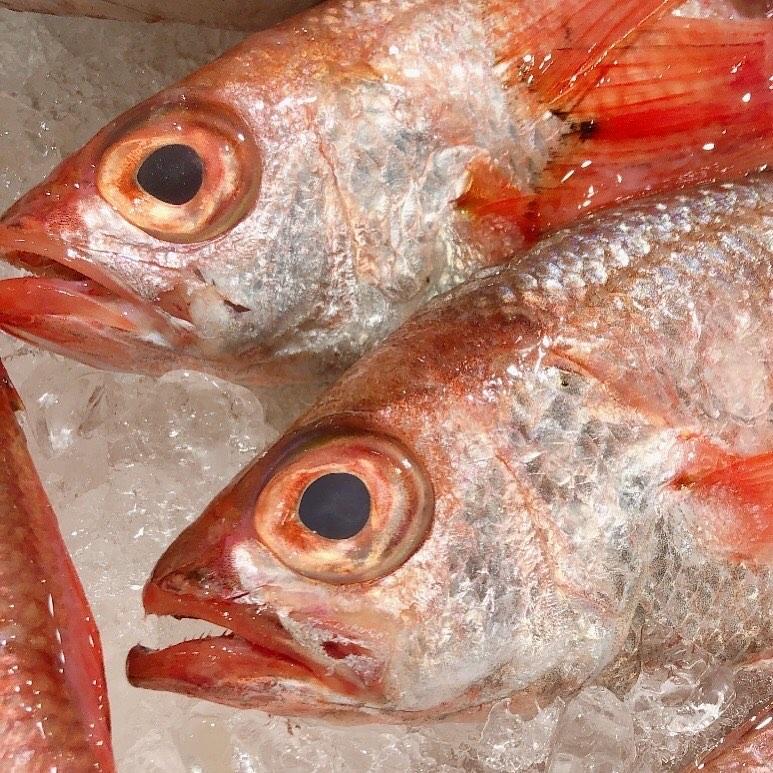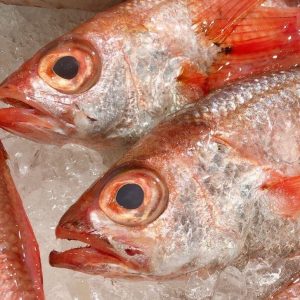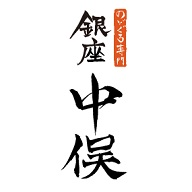
Why is nodoguro a luxury fish?
Nodoguro is known as one of Japan's most prized fish.
Because of its rarity and taste, it is often used as a luxury ingredient in high-end restaurants and ryotei.
So, why is the bigeye tuna valued as a high-end fish? Let us find out why.
Nodoguro is also a deep-sea fish that lives 200M-300M deep in the cold waters of the Sea of Japan and Tsushima Straits,
The catch is very limited. In addition, nodoguro are limited to the rivers they migrate up to for spawning, and their habitat is narrow,
It is considered a rare fish that is difficult to catch. For this reason, the quantity of nodoguro on the market is small,
The imbalance between supply and demand has given it a value as a high-end fish.
Why is nodoguro tuna so delicious?
The delicious taste of nodoguro is one of the attractions of this high-end fish.
Nodoguro has very dense, fatty flesh that melts in the mouth.
In addition, the fat of nodoguro has a moderately sweet taste and a deep flavor.
This perfect balance brings out the unique flavor of nodoguro.
Furthermore, nodoguro is widely cooked and used in a variety of dishes.
It can be enjoyed in a variety of ways, including raw sashimi, sushi, simmered, and grilled.
In addition, nodoguro meat is rich in nutrients,
It is rich in vitamins, minerals, and omega-3 fatty acids.
These nutrients have also been noted as health benefits of nodoguro.
Delicious season for nodoguro tuna
Nodoguro is a fish that is called differently in different regions,
Its season and recommended time of year is said to vary from region to region.
It is believed that the reason for this is that the type of food and the way they grow differ depending on their region of origin,
It also depends on what kind of cooking method is used.
The first recommended time is before the spawning season, as is often said of all fish.
Not only nodoguro, but most fish try to store nutrients in their bodies for spawning,
They eat more food than usual and are considered to have more fat.
The spawning season for nodoguro is said to be from July to October,
The best season is considered to be until September, when the spawning season is over.
In Shimane Prefecture, nodoguro are being branded, with nodoguro caught between August and May of the following year.
Only those that meet certain criteria can be called "dongchichi nodoguro.
This is because large sized nodoguro are caught off the San'in coast from the summer of August onward,
They are often said to be in season from fall to winter.
The larger the size, the more fatty the throat grouper is,
If you want to eat Shimane Prefecture's nodoguro (sea bream), it is recommended to start in autumn because it is considered to be delicious.
Some believe that, as with the spawning season, the season is from November to February, when the fish have stored up nutrients to survive the winter,
Especially in Kanazawa, the idea that nodoguro is to be eaten in winter has taken root.
And not just because they are fatty,
There is a theory that nodoguro are caught in winter to avoid the spawning season from July to October in order to protect them.
But what is the actual situation?
According to a study reported by the Shimane Fisheries Technology Center,
The fat content of nodoguro depends more on the size of the individual fish than on the season.
The larger the fish, the more fatty it is considered to be,
It is recommended that you rely on the size of the individual fish to identify its fat content, as it is impossible to discern the fat content from its appearance.
Nakamata Sake Brewing Group's Nodoguro
The nodoguro (sea bream) purchased by the Nakamata Sake Brewery Group is extra-large and contains plenty of high-quality fat,
It is perfect for a variety of dishes such as grilled, boiled, and sashimi.
I am not usually familiar with nodoguro,
Once you try it, you will surely become addicted to it,
We hope you will have a wonderful time at Nakamata Sake Brewery Group.









